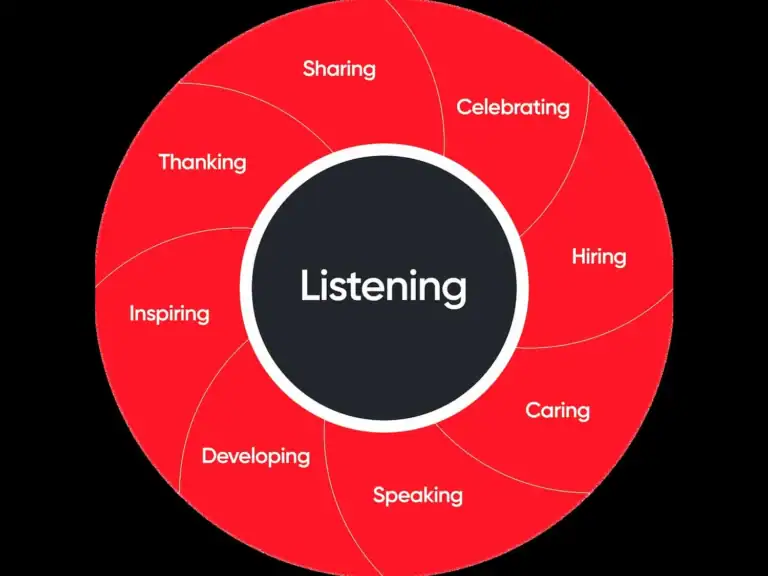
Best Strategies to Improve Your Employees’ Health and Well-Being

Shadi Hamdan
Employee wellness and business performance are connected in many ways. Employees who are healthy and happy create a thriving workplace, have higher levels of productivity and create a greater impact on the bottom-line than those who are not.
Investing time and resources in employees’ well-being not only improves their health and quality of life, it also reduces the overall cost of the company’s health care plan. Here’s how implementing a good wellness program can improve your workplace:
- Increase employee engagement and productivity
- Manage stress management and reduce debt reduction
- Improve overall health
- Lower injuries
- Help avoid health complications
- Boost morale
- Improve attendance
- Enhance communication and teamwork

How to improve employee well-being?
The good news is that employee well-being can be supported and developed. After researching the practices of Certified™ great workplaces and employee survey data, we know that six key practices are proving to help managers enhance employee well-being:
1. Measure employee well-being regularly
Employees’ needs are individualized and always evolving. This makes surveying, listening and measuring essential tools for understanding employees’ current experiences and tailoring strategies to support them.
2. Send powerful, simple signals that well-being matters
A crucial first step in acknowledging the emotional burdens employees may be facing is to let employees know their company and leaders care and that their organizations support them. This can be as simple as leaders modeling the behavior themselves.
Want to get recognized for your great culture?
Find out how you can power your people analytics function and show the world you’re a great workplace with our Great Place to Work-Certification™ process.
3. Connect employees with human experts
Well-being needs personalization, making coaches, experts and counselors critical resources to guide employees in developing strategies and skills for their own situations, strengths and values.
This is particularly true for mental health, an area where the Best Workplaces are rapidly expanding their support.
5. Foster an environment of ongoing development and learning
Improve employees’ capacity to achieve better well-being with self-development courses, mentorship and open communication about professional goals and work-life harmony.
6. Empower people to shape their contribution
Allow employees some level of autonomy in their work while linking their role to the outcomes of the organization. This can help provide a sense of control and purpose – key elements in fostering a sense of well-being.
Many have attempted to repair poor employee well-being with band-aid fixes like meditation apps and smartwatches. But, like any problem in life, you must uncover the root cause – and fix it at that level – if you want a long-lasting solution.
Are your employees are experiencing well-being at work?
Get in touch with Great Place to Work to survey your employees and benchmark your company culture. With our Trust Index™ survey you can measure employee well-being at your workplace and identify clear areas of opportunity.

What Makes Napco a Great Place To Work®? It Starts with Family Spirit and Ends with Impact
What Makes Napco a Great Place To Work®? It Starts with Family Spirit and Ends with Impact About Napco National Napco National has been part of the Saudi industrial landscape since 1956,

9 High-Trust Leadership Behaviors That Build Great Workplaces
Caring, Celebrating, Developing, Employee Experience, Hiring, High-trust leadership, Inspiring, Leadership & Management, Listening, Managerial Communication, Sharing, Speaking, Thanking Every employee should take these behaviors to heart whether or not they are people leaders. I often get asked

The Evolution of Workplace Culture: Why It Matters More Than Ever in 2025
One universal workplace experience is the emotional imprint left by an organization—its energy, trust, and sense of belonging. Although experts may agree on what constitutes

How Purunity Embeds Goodness into Work and Culture
People go where there is pride in the work they do. At Purunity, this sense of pride stems from our core mission: driving innovative and

Powerful Strategies to Cultivate DEI in Omani Workplaces
DEI is not only a buzzword! Developing a diverse, equitable, and inclusive work environment shows that leaders care about their employees, appreciate, and respect their

4 Strategies to Promote Resilience in UAE Workplaces
Cultivating resilience in the workplace is the key to empowering employees and boosting their confidence. It is important for both employees and their leaders. Resilience
Get Insights In Your Inbox
Access the latest news, research, and best practices to inspire your great workplace journey.
